Haiti: a storm, floods and lifesaving preventive action
Haiti is highly vulnerable to extreme climatic events. When Tropical Storm Laura struck the country last August, it caused considerable damage and loss of life. In Jacmel, in the south-east of the country, the SDC is carrying out a project to reduce the risks associated with such events. The work has helped protect a school as well as an entire neighbourhood. We spoke to an expert at the Swiss Humanitarian Aid Unit (SHA) who worked on the project.
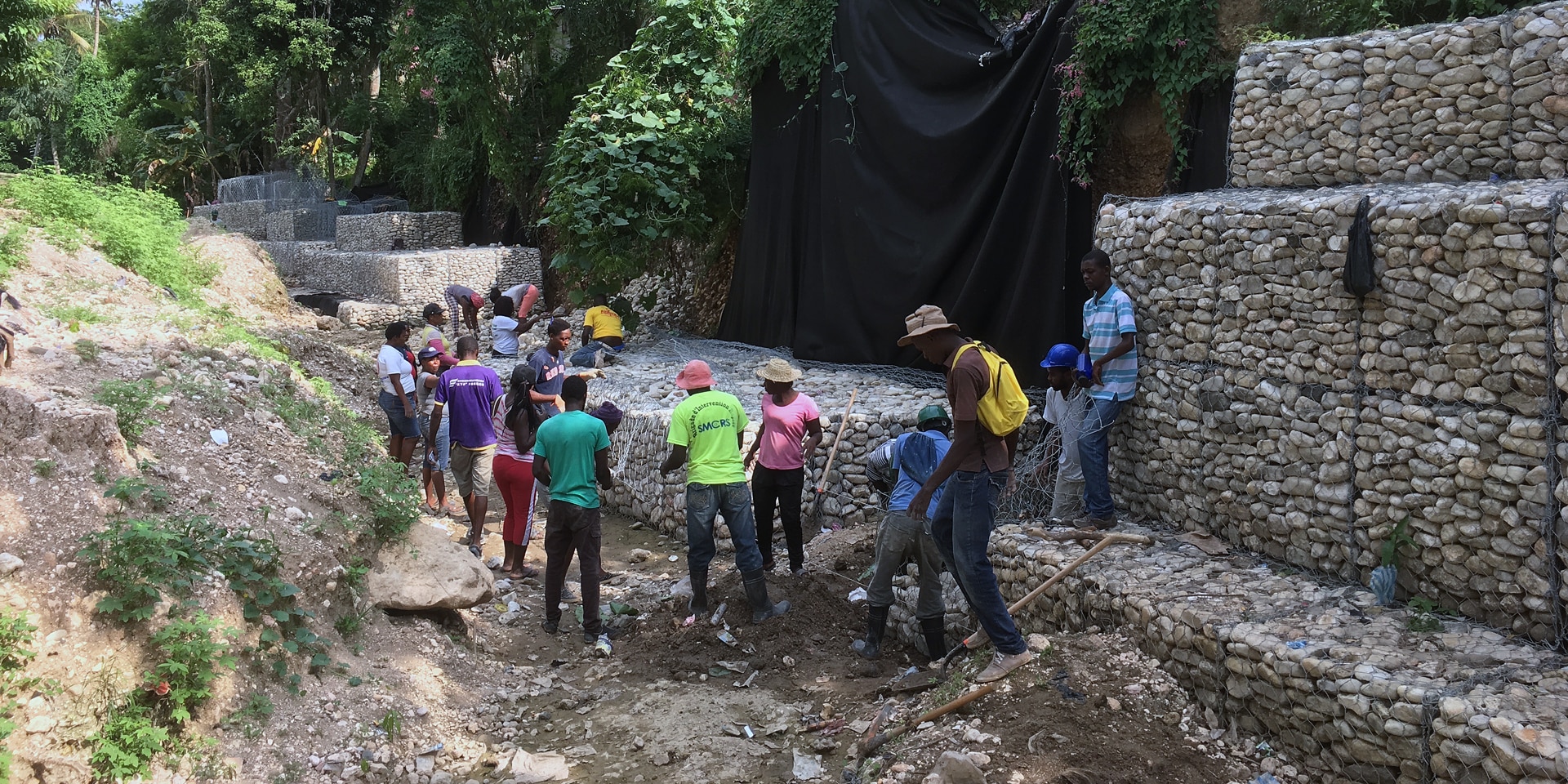
In 2018, the SHA supported the construction of gabions in the K-Dougé district, home to around 100 vulnerable families. © FDFA
Constance Jaillet is a water science and technology engineer and hydrogeologist. She joined the Swiss Humanitarian Aid Unit in 2017. Since 2018, she has been working in Haiti on an SDC project to reduce the risks associated with catastrophic events.
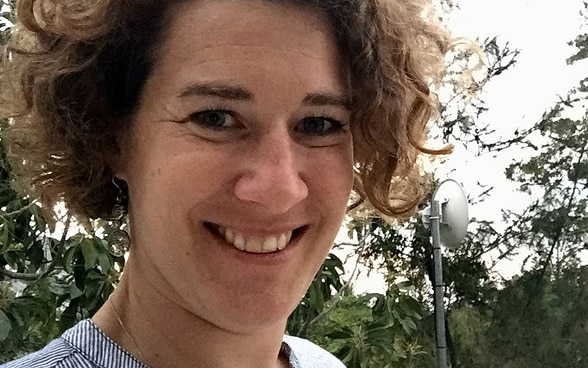
Constance Jaillet, comment avez-vous appréhendé l’arrivée de la tempête Laura en Haïti?
I felt quite calm. This kind of event is common in Haiti: the hurricane season lasts from June to November and we watch the forecasts carefully. There is a lot of cyclonic activity on the Atlantic Ocean this year. For three days, we monitored the development of Tropical Storm Laura, which was following a trajectory off the coast of northern Haiti. Over the course of Friday night, that trajectory suddenly changed: Laura made landfall in Haiti, causing torrential rain throughout the country.
Where were you on Sunday, 23 August 2020, when the storm struck Haiti?
I was at home in Jacmel, in the south-east of the country. The storm began in the night and continued throughout the morning. I waited for it to pass, and it was only in the afternoon that we were able to observe the extent of the damage. The disaster claimed more than 20 lives in the country's Sud-Est department. Lots of houses were flooded, bridges were destroyed and roads were cut off. The worst damage occurred near the Grande Rivière de Jacmel and the Rivière Gaillard in Cayes-Jacmel, where the rain caused major flooding.
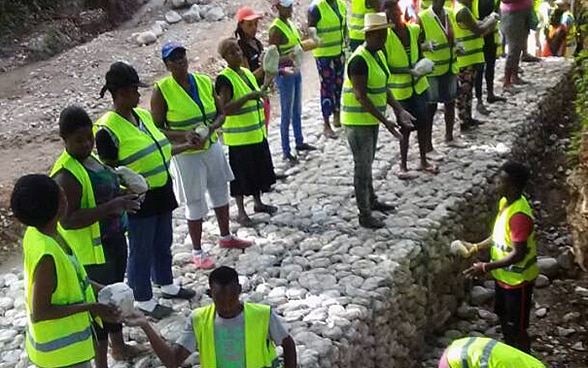
The SDC is carrying out a project on the ground to mitigate the risks linked with these kinds of events. Can you tell us a bit more about that?
In 2014, the SDC began a project in Jacmel to reduce the risks associated with catastrophic events. It aims to improve risk management at the local level, and relies on the abilities of Haitian specialists throughout the country. In Jacmel, the Haitian professionals received support from members of the Swiss Humanitarian Aid Unit in creating maps of the dangers caused by ground movement and flooding. We used these as a basis to work with the local community and authorities, defining and prioritising the preventive measures required to reduce the risks.
What exactly do these measures look like?
In 2018, we supported the creation of gabion flood barriers at two priority sites designated by the community: the École Nationale K-Rock, a school with more than 260 students, and the K-Dougé neighbourhood, which is home to around 100 vulnerable families. The school is also used as a provisional civil protection shelter. Both of these sites on the banks of the Rivière des Orangers were highly vulnerable to flooding. With the support of engineers, local instructors and the NGO Action pour un Développement Durable (ACDED), we built flood barriers five metres high and 100 metres long.
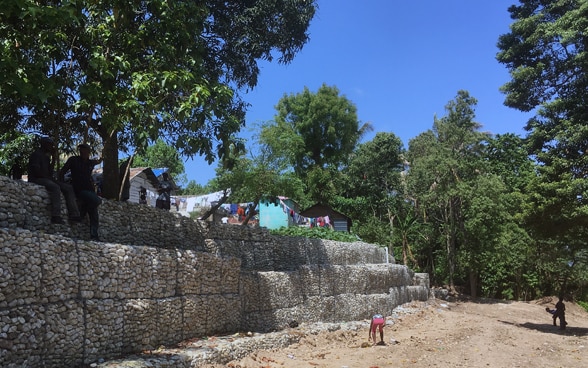
Tropical Storm Laura served as a test. What is your verdict?
The protection works withstood the heavy rainfall and the rising water levels. It was a relief, not to mention very satisfying, to see that the École Nationale K-Rock and the community of K-Dougé had been spared. The students were able to begin classes again. If the gabions had not been built, these families would have experienced a completely different fate. The local community is well aware of this, and it has boosted the credibility of the preventive work in their eyes.
The school withstood the storm, but there were casualties and destruction elsewhere. What needs to be improved?
The storm's trajectory changed abruptly. This took everyone by surprise and the alerts were issued too late. As a result, the evacuations took place right in the middle of the storm and without the necessary preparation. There can be no doubt that this worsened the outcome. That being said, it's also important to recognise the remarkable work done by local civil protection authorities, who acted immediately to assist survivors of the disaster.
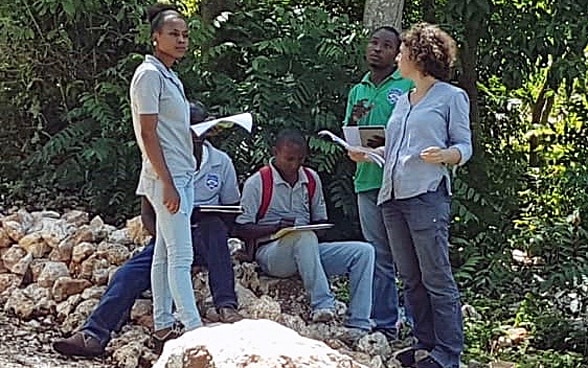
What role does the community play in this project?
A very active one. We involved the residents of Jacmel in the project from its beginnings in 2014. Based on the risk map, they were able to select and prioritise the sites to protect or reinforce. We trained people in the techniques needed to build gabion barriers, which allowed them to then take part in paid work. The project therefore provides training and jobs for those who are most vulnerable. It also contributes to the educational activities at the École Nationale K-Rock.
You have been working in Haiti for three years now. What have you learnt so far?
The most important thing I have learnt is that, in spite of the country's marked institutional fragility, it's quite possible to implement mechanisms for local risk governance in Haiti. We can also count on the dynamism of organisations from civil society. Tropical Storm Laura's passage through the region also proved that it makes sense to work on risk prevention, as well as on the preparation and response. It takes time, of course, but the work pays off in the long term.
Over the past three years, I have also learnt that it's essential to take the time to exchange ideas with all Haitians, whether they are small traders, guards, labourers or engineers. It's a good way to get to grips with the complex workings of the country and try to help them make the changes they want to implement.
Swiss Humanitarian Aid
Swiss Humanitarian Aid acts before, during and after conflicts, crises and natural disasters to serve the interests of people in need. It focuses on the reconstruction and rehabilitation of affected areas, disaster risk reduction, the protection of vulnerable people and emergency relief efforts. Swiss Humanitarian Aid is part of the Swiss Agency for Development and Cooperation (SDC) within the Federal Department of Foreign Affairs (FDFA).
